After more than a decade managing advertising through Google (from back when it was Google Ads to now), we've helped our own business achieve a lot of growth and success, helped clients' businesses, and have worked with companies that just weren't a great fit for Google's advertising platform.
The questions surrounding Google ads are seemingly endless. The potential is great and exciting for the vast majority of clients, but it's like looking over the horizon into the unknown—whatever's ahead comes with the potential risk of losing money.
Some common concerns that our clients often bring to our attention include:
- How much does it cost?
- Does it really work?
- How many people will see my ads?
- Who can I target?
- Do people actually click on those things?
- How much traffic will I get?
- What should my budget be?
- What will I get in return?
- Are there any guarantees?
At the end of the day, most of these questions can be summarized into one: "Are Google Ads worth it?"
It's not as easy as telling clients that yes, Google Ads are totally worth it, they will definitely work for your business. Just like there are no guarantees with organic search results, there isn't a guarantee that Google Ads will work. Some people end up wasting a ton of money on ads that don't get results. However, if they do work, the results can be amazing. So how do you determine whether the scales are tipped enough in your favour to give them a try?
In this article, we take a closer look at how Google Ads can enhance your business goals using our structured 4-step approach.
Are Google Ads Effective? Our 4-Step Approach

Before you get started with Google Ads, it's important to put in the work and do keyword research. At this first step, you'll learn how much search volume there is for searches related to your business, and roughly how much they will cost you to bid on. There are a lot of keyword tools out there, the most popular being Google Keyword Planner. But there are also other choices like Semrush or Ahrefs which might be worth the investment, especially since they can also be used as tools for content marketing. In any case, a keyword research tool is used to look up keywords that are relevant to your business.
1. Selecting and Structuring Keywords
Google recommends that you choose 5-20 keywords that work for your Ad group. What does that mean? Think of your Ad group as your main topic.
So if you sell computer hardware, you might want to advertise that you sell motherboards. So your Ad group would probably look something like this:
Ad group: Computer Motherboards
Keywords: gaming motherboards, high-performance motherboards, motherboards for overclocking, server motherboards, desktop motherboards, laptop motherboards
When you're getting keyword ideas, it's important to keep a few things in mind before you select which keywords you want to use. The table below summarizes some important considerations:
|
Keyword Consideration |
Why it's Important |
|
Average Monthly Searches |
How much opportunity is there for clicks? This is the first thing you'll need to know in order to determine what level of impact Google Ads can have on your business. |
|
Geographic Area |
Make sure you're restricting the data to the geographic scope you'll be advertising in. Break this down by location, and learn how the search volume is distributed across your targeted area. You'll get a good idea of which cities, provinces, states, etc., your ads will show up most frequently in. |
|
Average Cost Per Click |
This gives you an idea of how much money you'll need, and how competitive the digital advertising landscape is for your industry and location. |
After this first step, you should have an idea of how much opportunity there is for quality clicks, where they'll be coming from and how much each click will cost. This is a great start but resist the urge to jump in this early. We still have a ways to go in determining if Google ads will work for your business.
Setting Expectations: Conversion Metrics & Sales Data

It's difficult to generate expectations on potential ad conversions unless you start with a baseline. Your historic data provides a wealth of information you can use to help forecast the success you might get from Google Ads.
2. Key Metrics to Get You Started
You'll need a few metrics under your belt to get your started with setting expectations with Google Ads. Here are the most important ones:
|
Metric |
Description |
Formula |
|
Website Conversion Rate |
On average, how many website visitors does it take to generate a lead? |
Number of conversions divided by the total number of visitors in a given time frame. |
|
Customer Close Rate |
On average, how many leads does it take to generate a customer? |
Divide closed deals by the total number of leads you've had in a certain time frame. Take your result and multiply it by 100 to get a percentage. |
|
Customer Lifetime Value (CLV) |
On average, how much is a customer worth to you over the course of their lifetime? |
|
We're going to put these numbers to use in a few steps, but as a quick aside, let's touch on the difference between cost-per-conversion, and cost-per-acquisition (CPA).
A conversion is a loose term that can be used to describe any value-driving event. This could be a phone call, a form submission, an email, a download, a sale and more. Conversions are super, but shouldn't ever be confused with acquisitions.
An acquisition is the act of actually acquiring a customer. This is about more than just the initial sale because customers have a whole lifetime of value to offer as long as you keep them happy. When looking at the CPA, you'll be measuring it against the customer lifetime value.
Quote: "An acquisition is the act of actually acquiring a customer. This is about more than just the initial sale because customers have a whole lifetime of value to offer as long as you keep them happy."
Are Google Ads Expensive? How to Set a Budget

There are several factors to consider when deciding how much money to invest into Google Ads. How fast do you want results? How competitive is your market? Do you want to be aggressive or test the waters? How many opportunities will be missed with a limited budget?
Some budgets simply won't work. Whether we're working on a plan for a client, or our own business, we like to present or think about different budget levels.
3. Level of Investment When it Comes to Keywords
- Market entry: A safe way to test the waters and see if the results measure up to the expectations that were set. This is a common approach for the apprehensive or new advertiser. Some negatives to this approach include longer time to see results, less data (which delays performance improvement) and risk of your campaign not having enough gas to reach the desired outcome before it's marked as a failure.
- Market share: Usually the popular choice. This mid-level budget option provides steady results and balanced risk and returns. This is a good approach for those looking for proof of concept before fully diving in.
- Market leader: An aggressive strategy for those who are confident in the value of their returns, and are wanting to dominate the competition and drive big results. This option allows for quick testing, and lots of data to make key decisions for continued performance optimization. These accounts usually see the best results and lowest CPA's because they've invested the time and money into figuring out what works.
Are Google Ads Worth It For Small Business? Doing the Math
We're almost there! This is where you will discover whether or not Google Ads will work for your business. You've pulled a lot of numbers at this point, and can finally put them to work to help forecast some real expectations. Here we'll start to get an idea of where exactly we're going, and how we'll get there.
4. Putting the Numbers to Work
Here is a simple template we've created and use often:

Example Business Using the Formula Above
Let's see how this looks when we relate it to a real world example from one of our clients. We recently started working with a newer company in the health & wellness field. For confidentiality reasons, we'll refer to them as Green Recovery (not their actual business name). Green Recovery's objective is to increase lead generation and acquire new customers. Going through the structured approach, with about a year's worth of historic data available, here are the details we uncovered:
- There is 400k average monthly searches in their target geo for keywords that relate to their business.
- The average cost per click ranged anywhere from $3.50 on the low end to $15.00 on the high end. We made sure to tighten up our targeting and avoid the expensive broad, vague terms and focus on longer tail keywords that were more specific to their business. This helped us set a confident projection of $7.00 per click.
- A website conversion rate of 5%.
- A low customer close rate of about 4%. This was likely because they didn't have a lead qualification process in place.
- The average lifetime value of their customers is $26,000.
Here is how the template looked after we plugged the numbers in:

With a CLV of $26,000, that CPA is looking pretty good. While nothing is ever guaranteed, at this point we had done our due diligence and felt confident that Google Ads was a good fit for this business. We moved forward with the plan, and here is a snapshot of what the Green Recovery's results looked like in the first month:

As you can see, some of the numbers ended up being quite different than what was estimated, however, most were fairly close. It's important to put in the time when going through the information gathering steps as the more accurate the data is, the more on point your projections will be. I like to estimate things on the low end, as it's always better to underpromise and overdeliver.
Needless to say Green Recovery was very happy with the results, and continues to work with Roketto on increasing their new customer acquisition at a lower CPA.
Testing, Testing, 123

Ok, so you've determined that Google Ads are worth it for your business. You've done the work, choosing keywords and setting a budget. It's tempting to want to dive in head first at this point, but it's still important to start with short, small campaigns and gradually move into bigger and better ones. After all, you'll gain valuable data that will help guide you in making better decisions with your keywords and ad spend.
Test Short, Small Campaigns
Short Google Ads campaigns usually last for a month (around 30 days to be more specific), and are great for testing the waters of ads and seeing real-world results. You'll get immediate feedback with your campaign, and will be able to easily see if the fruits of your labour paid off.
Small, short campaigns:
- Are a Lower Risk: Smaller budgets limit financial exposure, allowing businesses to test Google Ads without large upfront investments.
- Give You Quick Insights: Short campaigns provide fast feedback on ad performance, helping businesses gauge keyword effectiveness, audience engagement, and ad copy within a short time frame.
- Allow for Refined Targeting: Allows for quick experimentation with various targeting options (e.g., demographics, locations, and keywords), enabling optimization before scaling.
- Gives Greater Budget Control: A small campaign allows businesses to tightly control spending while still reaching potential customers, helping manage cash flow and preventing overspending.
- Allow Flexibility for A/B Testing: Short campaigns can be used to test different ad variations, helping businesses identify what resonates most with their target audience before committing to a larger campaign.
But at some point, you'll want to actually take that head-first dive and invest in longer campaigns. Why? With short campaigns, while great in the beginning, are kind of like eating a cupcake: it's great at first, but it's gone quickly, and you're left staring at the wrapper wishing your treat could've lasted just a bit longer.
So while short campaigns are great, you'll quickly start to notice that they:
- Give You Limited Data: Short, small campaigns might not generate enough data to draw meaningful conclusions, leading to potentially skewed results and less reliable optimization decisions.
- Have Inconsistent Performance: A brief campaign may not run long enough to account for fluctuations in user behavior, keyword competitiveness, or seasonal trends, leading to potentially misleading results.
- Have a Lower Reach: With a smaller budget and shorter duration, campaigns might not reach a wide enough audience to have a significant impact, limiting brand awareness or conversions.
- Cost You More (Higher Cost Per Acquisition): Short campaigns may not have enough time to optimize effectively, resulting in higher costs per acquisition as the ad platform has less opportunity to adjust targeting for better performance.
- Don't Capture Long-Term Opportunities: Some campaigns take time to gather momentum and drive significant results. Short campaigns may miss out on longer-term benefits, such as accumulating valuable performance data or building brand awareness over time.
Test Long Google Ads Campaigns
You're probably thinking, "ok, so I've done a bunch of small campaigns, now it's time to move on to longer ones, right?" And that could be true. If ultimately you want to see long-term results, especially alongside your organic traffic, then a longer campaign (typically more than 30 days) is a great option. Longer Google Ads campaigns will give you more valuable insight into your target audience(s), and help you create better ads that resonate with them.
With longer Google Ads, you'll start to notice:
- There's More Data for Optimization: Longer campaigns generate more data, allowing for better optimization of ad performance, targeting, and bidding strategies over time.
- Better Performance Tracking: With extended duration, you can track performance trends, such as seasonal changes, user behavior shifts, and keyword fluctuations, leading to more informed decisions.
- Improved ROI Through Optimization: Over time, Google Ads' machine learning can help you better optimize ad delivery, resulting in more efficient ad spend, improved conversion rates, and lower cost per acquisition (CPA).
- You Can Create Stronger Brand Awareness: A long-term presence increases brand visibility, reinforcing recognition and trust, especially in competitive markets.
- There's More Opportunity for Iteration and A/B Testing: Long campaigns provide more time to experiment with different ad copy, targeting options, and bidding strategies, improving overall effectiveness through gradual refinement.
But of course, there's also some cons to longer ads:
- Higher Costs Over Time: Extended campaigns require a sustained budget, which can lead to significant costs, especially if not properly optimized or if ads underperform.
- Potential for Ad Fatigue: If the same ads run for too long without changes, audience engagement may decrease as viewers become desensitized to the content, leading to reduced CTR.
- Risk of Wasted Spend: Without continuous monitoring and optimization, long campaigns may continue spending on underperforming keywords or audiences, wasting budget over time.
- Constant Management Required: Long campaigns demand ongoing attention to performance metrics, competition, and market shifts. Failure to actively manage and optimize can result in reduced effectiveness.
- Competitive Changes: Over a long period, competitor behavior (e.g., new entrants, changes in bidding strategies) could affect your campaign's performance, requiring constant adjustments to stay competitive.
Why Testing Both Matters
By running both short and long campaigns, you can gather data on how each performs for your business. Short campaigns can validate new ideas quickly, while long campaigns provide sustained results and allow for deeper optimization. Analyzing metrics like CTR, conversions, and return on ad spend (ROAS) across both types of campaigns will reveal which approach drives the best outcomes for your business.
The key is to use this data to make informed decisions. If short campaigns consistently deliver strong results, you may want to focus more on time-sensitive offers and promotions. If long campaigns bring steady conversions and lower CPC over time, then a more sustained approach may be the way forward. In many cases, a hybrid strategy—using short campaigns for testing and promotions and long campaigns for continuous brand building—will provide the best results.
Conclusion
Ultimately, whether Google Ads are worth it for your business depends on careful planning, testing, and evaluation. By following the steps outlined in this article—starting with understanding your market, setting expectations, and testing short and long campaigns—you can make data-driven decisions that maximize your ad spend. Both short and long campaigns have their place in a well-rounded strategy, allowing for quick insights and long-term optimization. The key is to gather data from both, analyze the results, and refine your approach based on what works best for your unique business needs. With the right strategy and ongoing optimization, Google Ads can become a powerful tool for driving growth and achieving your business goals.
Feeling more confident about Google Ads? Reach out to us today and we can get you started on a great strategy for your business.
Chris Onyett
Chris is one of the managing partners at Roketto. His area of expertise is digital marketing and loves sharing and educating on topics like Google Ads, CPC bidding tactics, Google Analytics, and marketing automation. When Chris isn't in the office, he enjoys playing volleyball, mountain biking, and hiking with his American Eskimo.











2.png)
2.png)









